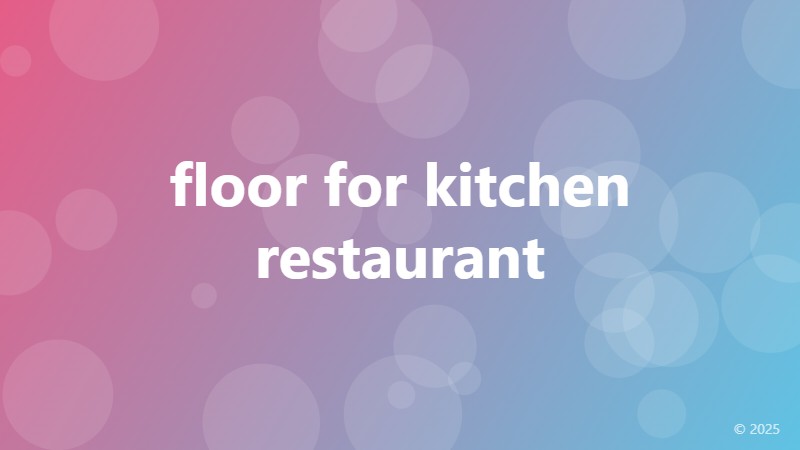floor for kitchen restaurant
 Here is the article:
Here is the article:
Choosing the Right Floor for Your Kitchen Restaurant
When it comes to designing a kitchen restaurant, there are many factors to consider. One of the most important decisions you'll make is choosing the right floor. The floor of your kitchen restaurant sets the tone for the entire space and can greatly impact the ambiance, functionality, and safety of your establishment. In this article, we'll explore the different types of floors that are suitable for kitchen restaurants and what to consider when making your decision.
Durability and Maintenance
One of the top priorities when choosing a floor for your kitchen restaurant is durability. Your floor will be subject to heavy foot traffic, spills, and stains, so it's essential to choose a material that can withstand the demands of a busy kitchen. Ceramic or porcelain tiles, for example, are excellent options as they are easy to clean, resistant to stains, and can withstand heavy foot traffic. Additionally, they are also resistant to scratches and cracks, making them a great choice for high-traffic areas.
Slip Resistance and Safety
Safety is another critical consideration when choosing a floor for your kitchen restaurant. A slippery floor can be a major hazard, especially in areas where food is being prepared and served. Look for floors with slip-resistant coatings or textured surfaces to reduce the risk of slips and falls. Rubber flooring, for example, is a popular choice for kitchen restaurants as it provides excellent traction and is easy to clean.
Aesthetics and Ambiance
The floor of your kitchen restaurant also plays a significant role in creating the ambiance and atmosphere of your establishment. A beautifully designed floor can elevate the overall dining experience and create a welcoming atmosphere for your customers. Consider the color, texture, and pattern of your floor and how it will complement the overall design of your kitchen restaurant. For example, a warm, natural stone floor can create a cozy and inviting atmosphere, while a bright, bold tile can add a pop of color and energy to the space.
Hygiene and Sanitation
In a kitchen restaurant, hygiene and sanitation are of utmost importance. The floor of your kitchen restaurant should be easy to clean and maintain to prevent the spread of bacteria and germs. Look for floors with antimicrobial properties, such as epoxy or polyurethane coatings, which can help reduce the growth of bacteria and other microorganisms.
In conclusion, choosing the right floor for your kitchen restaurant is a crucial decision that requires careful consideration of durability, maintenance, slip resistance, aesthetics, and hygiene. By selecting a floor that meets these criteria, you can create a safe, functional, and inviting space that will enhance the overall dining experience for your customers.